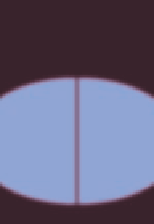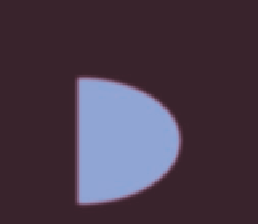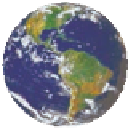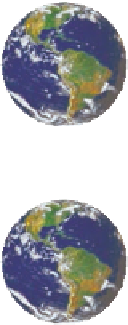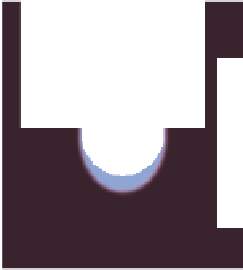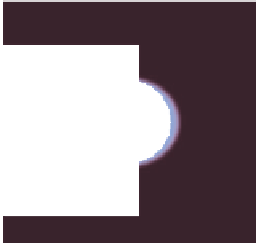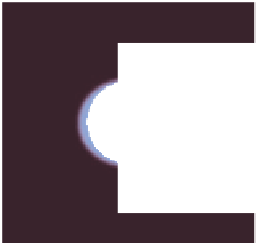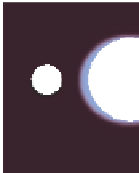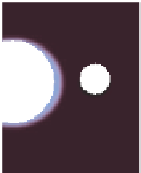Geoscience Reference
In-Depth Information
Moon's gravitational
force low due to
distance to the
Moon
Moon's gravitational
force greater
for points close
to Moon
Earth's
centrifugal
force equal
everywhere
Earth's
centrifugal
force equal
everywhere
Tidal bulge
Tidal bulge
Excess force at
each point after
subtracting
centrifugal force
from gravitational
force
Excess force on
earth after
subtracting
centrifugal force
from Moon's force
(b)
(a)
Figure 19.7 Formation of tides.
(a) Tide-raising force on the side of Earth facing the Moon. On this side of Earth, a tidal bulge forms
because the Moon's attractive forces exceed Earth's centrifugal force. The bulge is most pronounced where Earth is closest to the
Moon due to the curvature of both bodies. (b) Tide-raising force on the side of Earth opposite the Moon. A tidal bulge forms on this
side of Earth because the centrifugal force associated with the combined rotation of Earth and Moon is greater than the Moon's gravi-
tational force. The height of the observed tides in the figure is significantly exaggerated to illustrate the forcing variables and effects.
under the two tidal bulges (the direct and indirect) each day.
Similarly, each coastal locality would also experience two low
tides between the bulges. If the Moon were stationary, the tim-
ing of these high and low tides each day would always be the
same. The Moon is not stationary, of course, but instead slowly
orbits Earth approximately every 28 days. As a result, the tim-
ing of the high tides is about an hour later each day.
Tides are even more complicated when the role of the Sun
is factored into their timing and character (Figure 19.8). Al-
though the gravitational force of the Sun is less than that of the
New
Moon
Half
Moon
Spring
tides
Spring
tides
Half
Moon
Neap
tides
Neap
tides
Full Moon
Spring tides
Spring tides
Neap tides
Neap tides
(a)
(b)
(c)
(d)
Day 1
Sun and Moon
aligned, producing
spring tides
Day 7.5
Sun and Moon
at right angle,
producing neap tides
Day 15
Sun and Moon
aligned, producing
spring tides
Day 22
Sun and Moon
at right angle,
producing neap tides
Figure 19.8 Orbital geometry and tidal cycles during the lunar month.
The timing of spring and neap tides is related to the position
of the Moon relative to the Earth and Sun. Spring tides occur when the Earth, Moon, and Sun are aligned, whereas neap tides happen
when the Moon is at a right angle to Earth relative to the Sun. There is usually a short (~1 day) lag between the celestial and tidal cycles.





